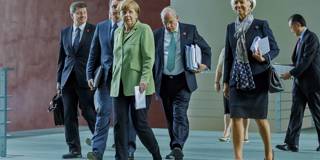Recent rebukes of globalization, such as the UK's Brexit vote and the election of Donald Trump as US president, suggest that the marginalization of the World Trade Organization will continue. But these outcomes may actually have the opposite effect, owing to three key developments.
NEW DELHI – For too long, the World Trade Organization has languished, to lift a reference from T.S. Eliot, by the “waters of Leman” (Lake Geneva). Once the world’s preeminent multilateral trade forum, the WTO has been steadily marginalized in recent years, and recent rebukes of globalization, such as the United Kingdom’s Brexit vote and the election of Donald Trump as US president, suggest that this trend will accelerate. But these outcomes may actually have the opposite effect, owing to three key developments that could enable the revival of the WTO – and of the multilateralism that it embodies.

NEW DELHI – For too long, the World Trade Organization has languished, to lift a reference from T.S. Eliot, by the “waters of Leman” (Lake Geneva). Once the world’s preeminent multilateral trade forum, the WTO has been steadily marginalized in recent years, and recent rebukes of globalization, such as the United Kingdom’s Brexit vote and the election of Donald Trump as US president, suggest that this trend will accelerate. But these outcomes may actually have the opposite effect, owing to three key developments that could enable the revival of the WTO – and of the multilateralism that it embodies.